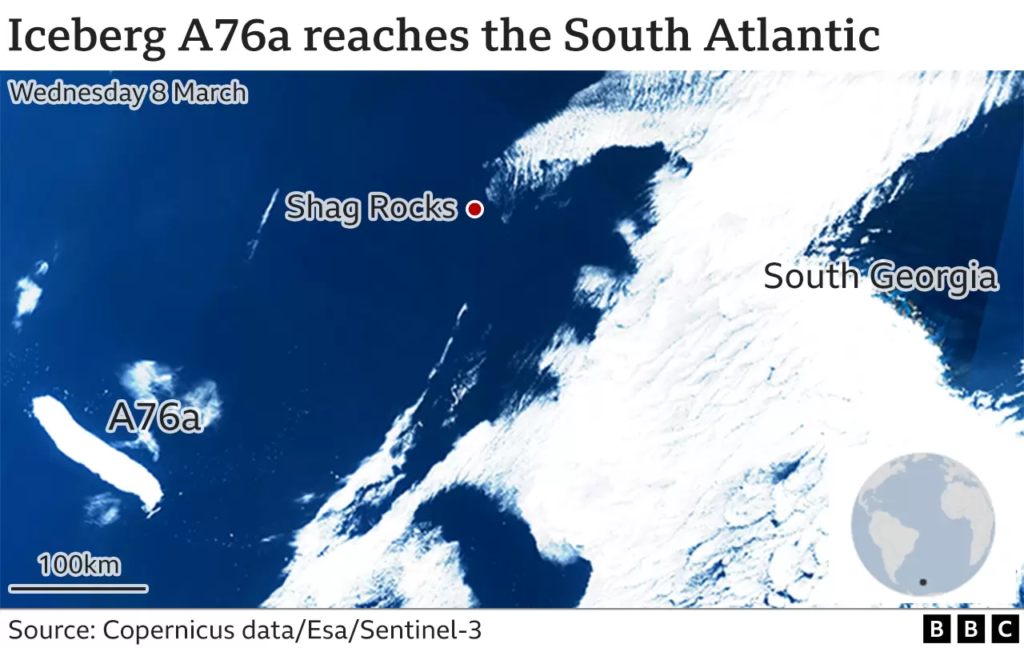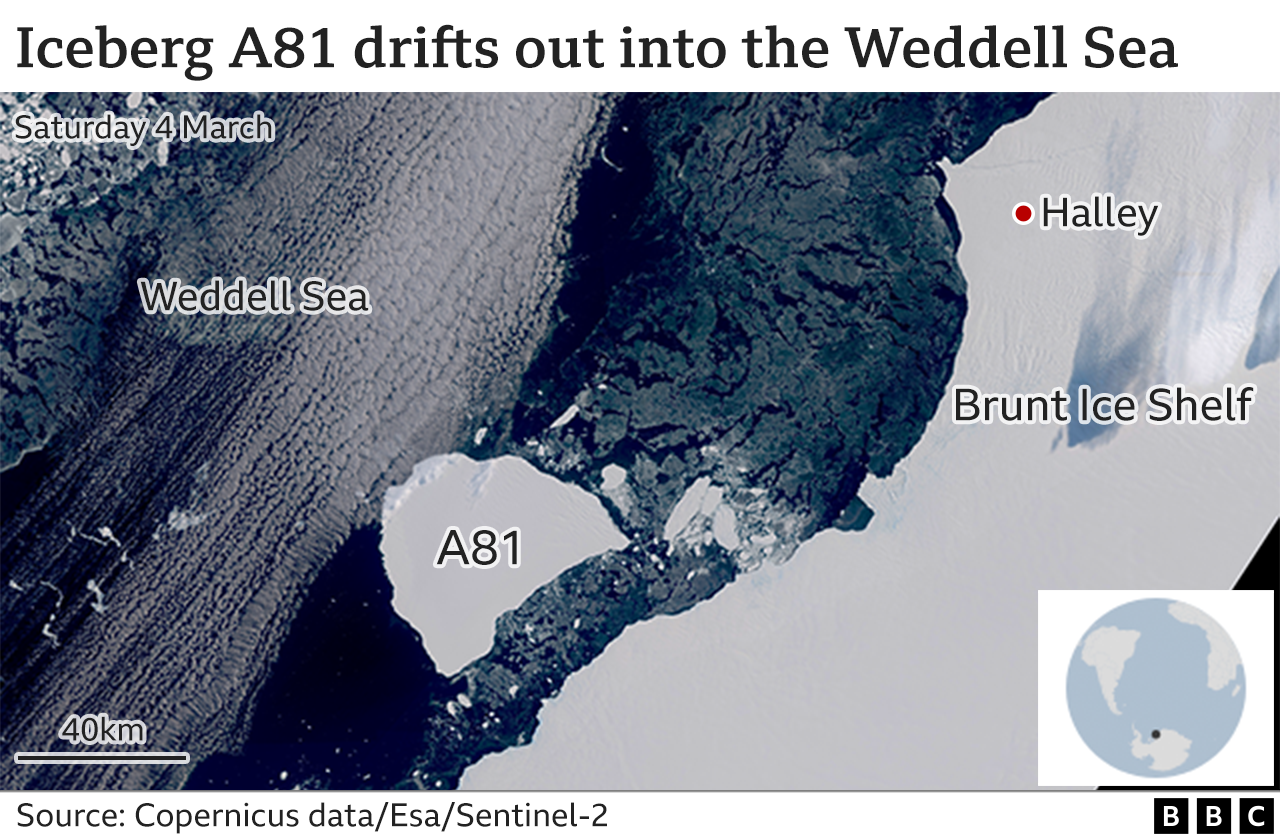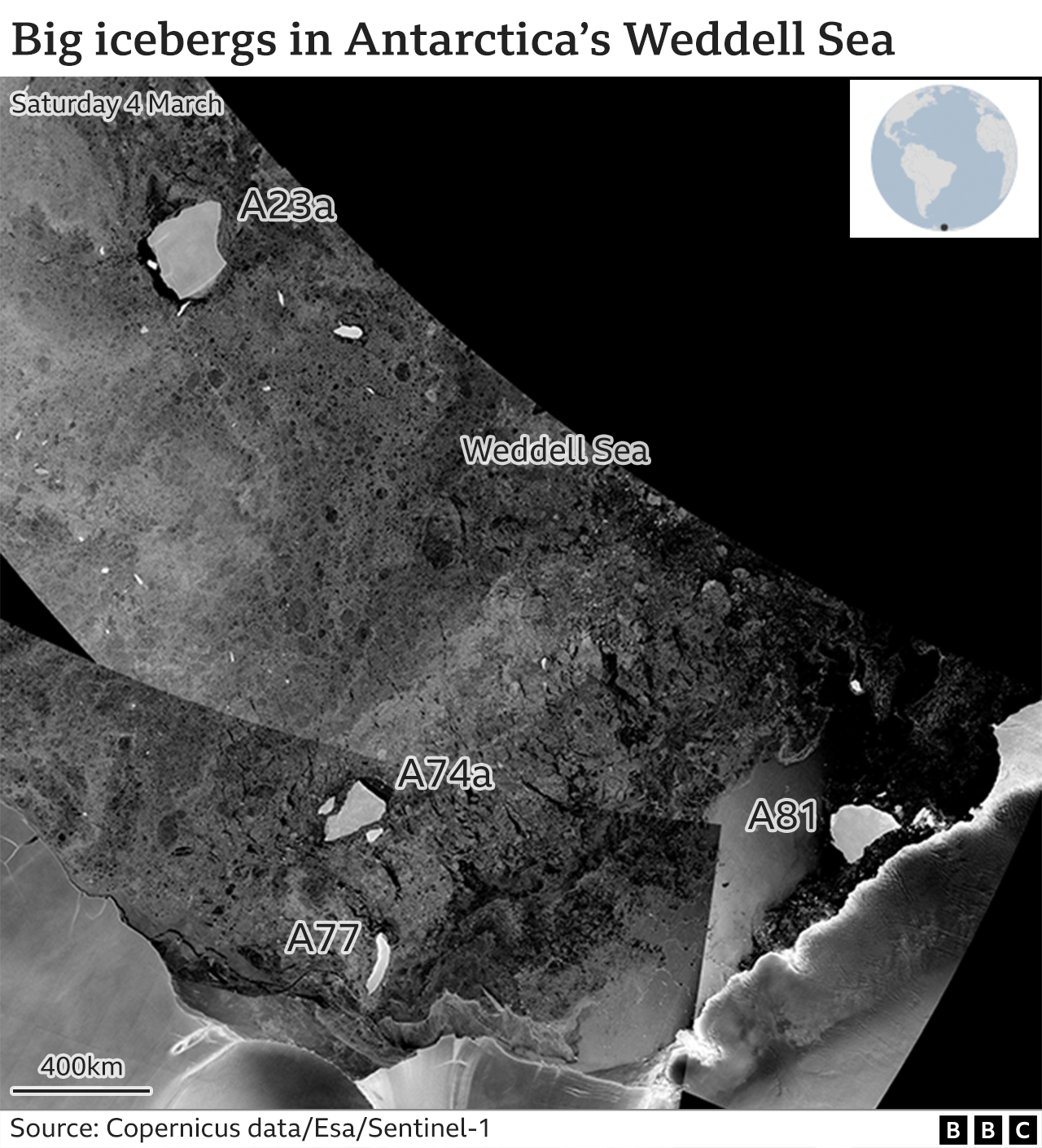British scientists are tracking two of the world’s biggest icebergs as they drift towards areas where they could affect shipping, fishing and wildlife.
These city-sized frozen blocks which have broken away from Antarctica can take decades to melt and wither away.
A group of researchers photographed one named A81 as they were flying off the UK’s Halley base for the season. This berg is as large as Greater London.
Another team sailed around A76a, an even bigger one the size of Cornwall.
This behemoth is not just similar to the English county in size – at over 3,000 sq km – but also in shape: it’s long and thin.
Some have likened its appearance to a giant ironing board.

Prof Geraint Tarling was on board the Royal Research Ship Discovery which took the opportunity to inspect the berg as it drifted out of Antarctica’s Weddell Sea into the South Atlantic.
“It was directly in our path as we sailed home so we took 24 hours out to go around it,” the biological oceanographer told BBC News.
“We got in quite close in some places, and had a really good view of it. We collected water from around the berg using special non-contaminated pipes under the ship, so we’ve got lots of samples to study.”
The British Antarctic Survey scientist said the huge flat-topped, or tabular, icebergs had a considerable influence on their environment – both disruptive and productive.

As they melt, they put prodigious volumes of fresh water into the sea, which can make it hard for some organisms to function. On the other hand, the melt also releases the mineral dust that was incorporated into the ice when it was part of a glacier scraping along the rock bed of Antarctica. This dust is a source of nutrients that will spur life in the open ocean.
A76a originated far to the south of its present position, having calved from the Filchner-Ronne Ice Shelf in May 2021.
It’s now heading north, carried by currents and winds towards the gap between the British overseas territories of the Falklands and South Georgia.
There is some concern that it could swing east towards South Georgia and get stuck in the shallow waters of its continental shelf – or possibly at the series of nearby islets known as Shag Rocks.
In either location, it would be a complication for local wildlife and people.
“If it does become grounded, our major concern is break-up and the impact of (smaller) icebergs on vessel movements in the area,” explained Dr Mark Belchier, the director of fisheries and environment with the government for South Georgia and the South Sandwich Islands.
“Although the tourist season is coming to an end, our fisheries operate during the winter months so it may impact on their operations. It does have the potential to cause localised issues for some of our wildlife, although that’s likely to be less of an issue if it breaks up over winter when most animals can forage over greater distances and don’t have to keep returning to land to feed young – or have moved away from the island completely.”

A81 broke away from the Brunt Ice Shelf at the end of January.
It had been expected to calve several years ago, but somehow managed to hang on to the continent by the slimmest of icy threads, defying scientists’ predictions. Its eventual destiny is to follow A76a out into the shipping lanes of the South Atlantic.
A BAS team had the opportunity to fly over the berg when they closed up and left the Halley research station at the end of the Southern Hemisphere summer season.
It’s often hard to gauge the size of icebergs when viewing their white mass in pictures.
But for both A81 and A76a, it’s worth remembering that what you see is only a fraction of the objects’ bulk.
The visible cliffs rise above the waterline by tens of metres, which means the ice extends down from the water surface by hundreds of metres.
The biggest icebergs can weigh a trillion tonnes.
A block of ice known as A23a is currently the world’s largest berg. It measures some 4,000 sq km in area. Like A76a, it calved from the Filchner-Ronne Ice Shelf, but a very long time ago – in 1986. The block has spent the decades since as an “ice island”, grounded in the south-central Weddell Sea.

Source: British Broadcasting Corporation


